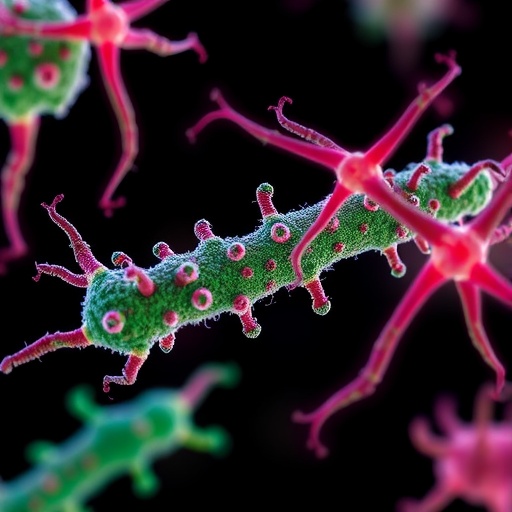PROTECT YOUR DNA WITH QUANTUM TECHNOLOGY
Orgo-Life the new way to the future Advertising by AdpathwayFor over half a century, the totoaba fish, a native species of the Gulf of California, has been enshrouded in a cloud of illicit trade and environmental peril. Despite a stringent international ban on totoaba fishing and trade that has stood since 1977, this large fish remains at the center of a complex socio-economic and ecological saga. At the heart of this crisis is the extraordinarily high black-market value of the totoaba swimbladder, which can reach prices up to $80,000 per kilogram in Chinese markets. This astronomical price tag has rendered the fish a lucrative commodity, prized not only as luxury food and symbolic gifts but also as speculative investments, effectively fueling a shadow economy dominated by Mexico’s infamous Sinaloa Cartel.
The persistence of totoaba poaching, despite decades of regulatory efforts, presents a critical challenge that blends environmental urgency with intricate human dynamics. The relentless demand for totoaba swimbladder drives a portfolio of illegal activities including extortion, violence, and drug trafficking, which in turn has destabilized communities across the Gulf of California region. More alarmingly, the indiscriminate nature of totoaba fishing gear has tragically ensnared the vaquita porpoise—a small marine mammal already teetering on the brink of extinction with fewer than a dozen individuals remaining. This bycatch catastrophe illustrates the far-reaching consequences of the totoaba black market, positioning it as a poignant symbol of the need for innovative conservation strategies that transcend conventional bans.
In an intriguing departure from traditional regulatory approaches, a research team from the University of California, Santa Barbara (UCSB) and AgroParisTech has explored the potential of aquaculture as a market-based solution to alleviate the pressures of illegal totoaba harvesting. By meticulously combining biological data on totoaba life history with detailed economic analyses of poaching and farming costs, the researchers developed a sophisticated model to predict outcomes if aquaculture were legalized and integrated into international trade. Their findings, published in npj Ocean Sustainability, suggest that farming totoaba could substantially reduce poaching by offering a legal, competitively priced alternative that meets consumer demand without further endangering the wild populations.
Totoaba farming is not novel; existing aquaculture operations in Mexico already supply the domestic market with totoaba meat, including ceviche dishes available in urban centers like Mexico City. However, this domestic farming exists in a legal grey zone—while farming for local consumption is prevalent, international trade and wild harvesting remain prohibited. The UCSB-led research underscores this complexity by highlighting how the current market operates under the tight grip of the Sinaloa Cartel, which wields considerable power over fishing communities through coercion and economic incentives, effectively maintaining a monopolistic hold over both poaching and trade.
One of the study’s more profound insights is the precarious balance of the totoaba population under current conditions. Researchers identified three distinct equilibrium states within the fishery: one characterized by a robust, stable population, and two others where the population is critically diminished. This bifurcating dynamic reveals an ecosystem on the edge of collapse, susceptible to perturbations that could irreversibly undermine totoaba survival. The implication is clear: without novel interventions, existing policy frameworks are ill-equipped to steer the species toward sustainable recovery.
Unlike many illicit wildlife trades wherein poaching incurs minimal costs and risks, totoaba poaching involves significant operational expenses, including bribes, labor wages, and logistics such as fuel and equipment maintenance. This cost structure presents a strategic opportunity; namely, that legal aquaculture, if designed to be economically competitive or even cheaper, could economically disincentivize illegal harvests. Experiments measuring growth rates of totoaba in captivity further support aquaculture’s viability, showing accelerated development conducive to profitable farming cycles, a stark contrast to other endangered species less amenable to such interventions.
Consumer perception represents another pivotal factor in the potential success of legal aquaculture for totoaba. For farmed totoaba products to substitute effectively for wild-caught supply and thereby reduce poaching, customers must regard both sources as interchangeable. Conventional wisdom suggests a preference for wild products, often viewed as more desirable or prestigious. Yet preliminary assessments by the research team question this assumption and promote further investigation through consumer preference studies in China, the primary demand hub. Equally significant is the role of regulating bodies such as CITES, which faces the delicate task of permitting trade in farmed totoaba while ensuring clear labeling to prevent laundering of illegal products—an administrative and enforcement challenge that may complicate market acceptance.
The economic model projected by the study envisions at least two plausible market responses should farmed totoaba swimbladders enter legitimate trade channels. One scenario involves a ‘price war,’ where the cartel attempts to flood the market to outcompete aquaculture producers, accepting short-term losses for strategic dominance that could exacerbate threats to wild populations. Alternatively, the cartel could acknowledge reduced market share yet maintain stable prices by limiting their supply. This latter outcome appears more beneficial to totoaba conservation, with both scenarios contributing to breaking the current market’s instability, thus stabilizing the population.
Despite the complex and often violent context in which the totoaba trade operates, the model intriguingly accounts for the possibility that the cartel might even integrate aquaculture into its portfolio, given its lower operational costs and legal facade. Such a co-option could paradoxically enhance totoaba conservation outcomes while diminishing illicit activities tied to wild poaching, though it introduces ethical and enforcement dilemmas requiring vigilant oversight. To mitigate risks, the authors advocate for a flexible regulatory framework equipped with rapid-response mechanisms capable of reinstating trade restrictions should unintended adverse effects emerge.
The implications of this research are profound, as it calls for a paradigm shift in tackling wildlife overexploitation by blending economic incentives with conservation goals. Instead of relying solely on top-down regulatory prohibitions, the strategy leverages market mechanisms that align profitability with sustainability, potentially transforming an intractable black market into a controlled, legal supply chain. Successfully implemented, such a model could provide a blueprint for confronting similar conservation challenges globally, where demand-driven illegal trades threaten biodiversity and local communities alike.
While promising, the proposed approach demands careful calibration, including robust subsidy programs to maintain cost competitiveness and concerted efforts to educate consumers and diminish demand for wild-sourced products. The balance between fostering legitimate aquaculture and preventing market expansion that could inadvertently drive overall demand is delicate and underscores the necessity of multidisciplinary engagement—spanning ecology, economics, social sciences, and policy.
Ultimately, the study not only sheds light on the intricate socio-ecological dynamics surrounding the totoaba crisis but also exemplifies how interdisciplinary scientific inquiry can pave the way for innovative solutions. By embracing the complexities of illegal wildlife trade and strategically integrating aquaculture within the regulatory realm, there lies tangible hope for securing the future of the totoaba, protecting the vaquita porpoise, and restoring economic stability to the fishing communities caught in this multifaceted conflict.
Subject of Research: Conservation and market dynamics of Totoaba macdonaldi, focusing on aquaculture as a strategy to reduce illegal poaching and trade.
Article Title: Substantial gains and little downside from farming of Totoaba macdonaldi
Web References: https://rdcu.be/eFHXJ
DOI link: http://dx.doi.org/10.1038/s44183-025-00143-4
Image Credits: Procuraduría Federal de Protección al Ambiente (PROFEPA)
Keywords: Applied sciences and engineering, fishing, overfishing, poaching, conservation policies, aquaculture, fisheries, fisheries management, international trade, environmental policy, regulatory policy
Tags: black-market totoaba swimbladdercombatting totoaba poachingenvironmental challenges in fishingGulf of California ecologyillegal wildlife trade impactsmarine biodiversity conservationSinaloa Cartel influencesocio-economic effects of poachingstrategies for sustainable fishing practicessustainable totoaba farmingtotoaba fish conservationvaquita porpoise protection


 3 hours ago
1
3 hours ago
1





















 English (US) ·
English (US) ·  French (CA) ·
French (CA) ·